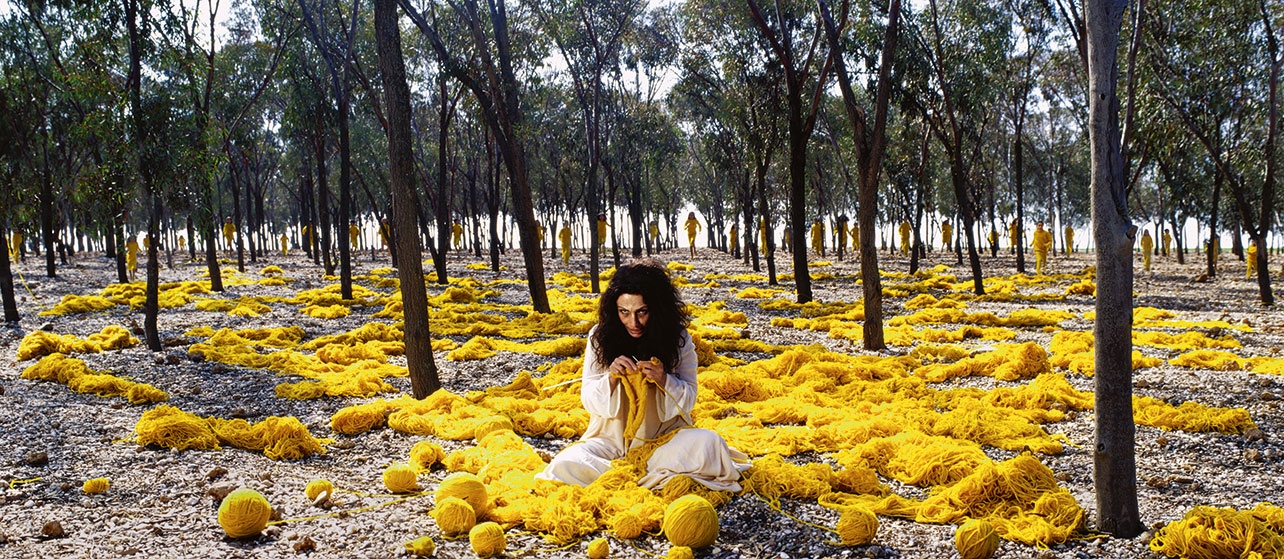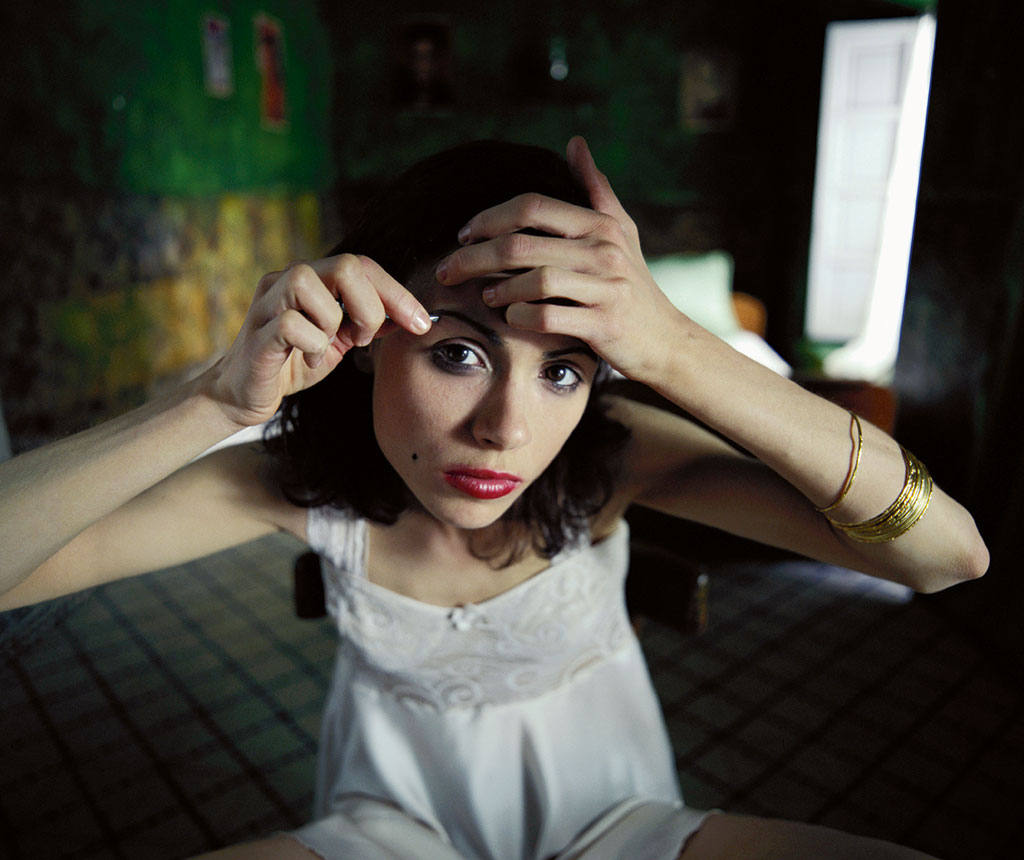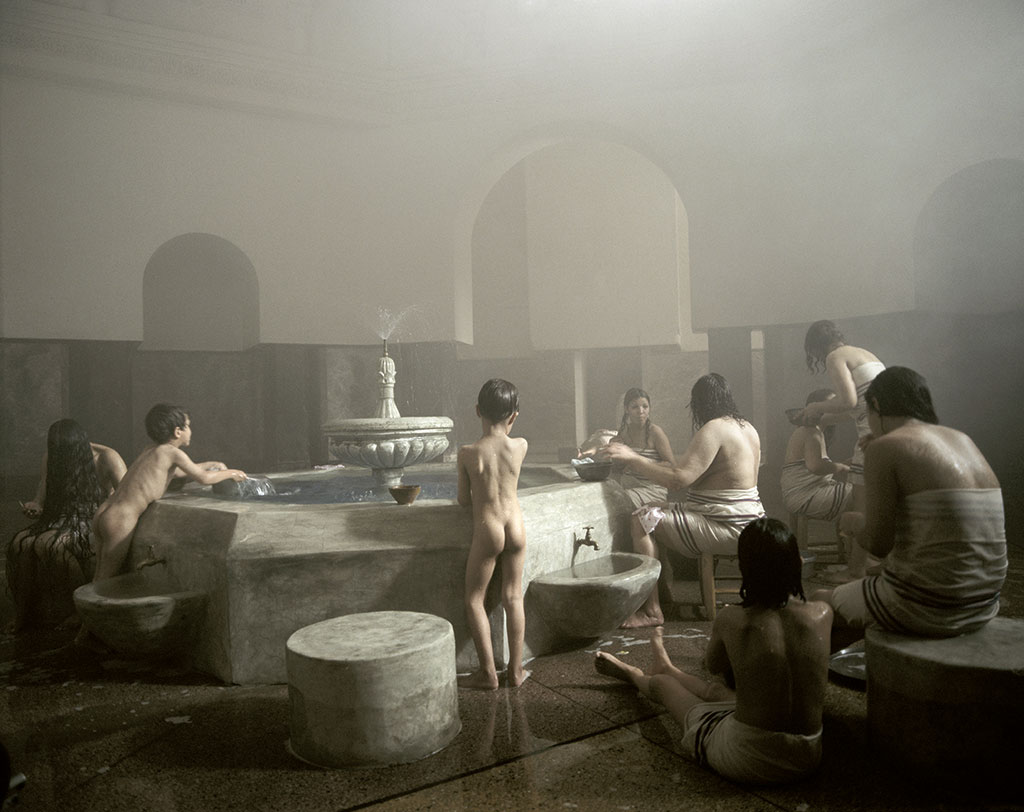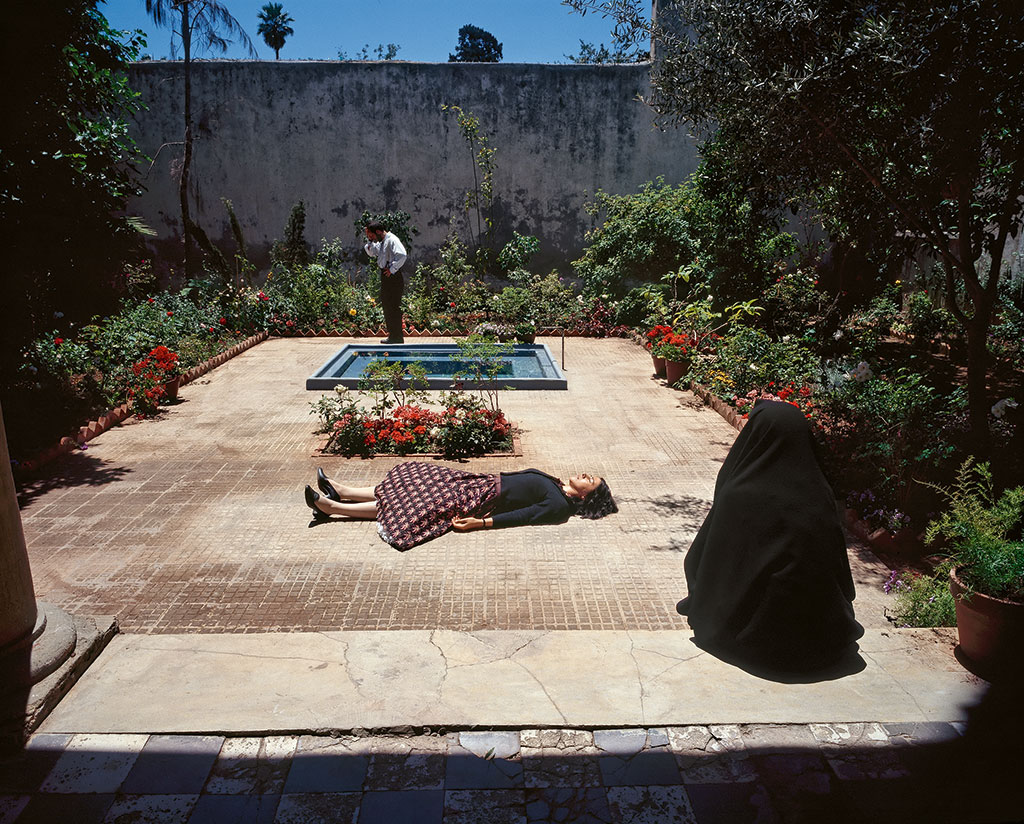ART-PRESENTATION: Shirin Neshat-Women Without Men
 The key themes in Shirin Neshat’s oeuvre address the relationship between man and woman, the individual and society, between power and powerlessness as well as sexuality and the condition of exile. Her work is shaped by the cultures of the Middle East that she grew up with, while being expressed in a universal, eternal and extremely aesthetic figurative language.
The key themes in Shirin Neshat’s oeuvre address the relationship between man and woman, the individual and society, between power and powerlessness as well as sexuality and the condition of exile. Her work is shaped by the cultures of the Middle East that she grew up with, while being expressed in a universal, eternal and extremely aesthetic figurative language.
By Dimitris Lempesis
Photo: ARoS Museum Archive
For the first time since 2008, when in Shirin Neshat’s “Women Without Men” was presented at the exhibition of the same name, ARoS Museum shows the five-part film in its full-length version. The work is composed of five video installations: Mahdokht, Zarin, Munis, Faezeh, and FarokhLegha. The total running time is about an hour and a quarter. Shirin Neshat’s first feature film is an adaptation of Iranian novelist Shahrnush Parsipur’s novel “Women without Men” which is forbidden in Iran. Neshat’s fascination with Parsipur’s novel and her own exploration of the literary work’s intrinsic visual qualities were evident in her “Zarin” Series (2005), a collection of photographs inspired by one of the novel and film’s main characters, Zarin. Women without Men hones in on the life of five women (Zarin, Faezeh, Munis, Farokh Legha Fakhri and ) in one of the most politically tumultuous times in modern Iranian history, the 1953 CIA-backed coup against Prime Minister Mohammad Mossadegh. In her film Shirin Neshat further develops the novel’s magical realism and its Persian myths, letting the supernatural and the magic enter into a dialogue with the realistic story. The novel’s five female protagonists are portrayed by Shirin Neshat in a gripping drama of power and powerlessness, as they wander down tortuous byways to finally arrive at a green and lush garden outside Teheran. Each woman, in her own way, rejects her former life, moving away from the city out into the garden which becomes a temporary safe haven. For these women life is a struggle for freedom and survival in a religious, sexist and socially divisive society. While the women go through their personal transformation the outside world slowly pushes in until one day it arrives at their sanctuary, forcing them all to ultimate moments of revelation. Shirin Neshat said about the movie: “This has been a labour of love for six years… This film speaks to the world and to my country”.
Mahdokht: The film portrays the lonely woman, Mahdokht, in a fanciful and magical story. She lives a life in fear of her own sexuality and is terrified of losing her precious virginity while at the same time being obsessed with the thought of her own fertility and her desire to have children. Split by this paradoxical dilemma, she seeks refuge in a luxuriant and mysterious garden situated in a barren desert landscape. Here, remarkably and magically, she chooses to leave her life as a human being and instead plant herself as a tree so that in this form, despite her virginity, she can nevertheless bear fruit and spread her seed throughout the world. Images of a beautiful, surreal or nightmarish nature –in three juxtaposed projections– portray a woman tormented by obsessions and madness. Finally, however, she achieves a form of freedom and independence from the constricting bonds of society when –floating in the water like a corpse dressed in white– she becomes one with nature.
Zarin: In this film, we follow the young woman, Zarin, who, as a result of her bleak situation in life, suffers from anorexia and an urge to inflict harm on herself. She works as a prostitute in a brothel until one day when she makes the traumatic discovery that the men exploiting her have no faces. She flees in horror through the winding streets of the city, away from the dreadful faceless men in the brothel, to a bathhouse. Here she attempts ritually to wash her sins away. She manically scrubs her thin, starved body with a rough loofah until she bleeds, while the other women and children present look on in horror. When Zarin, now cleansed goes out into the street again, however, nothing has changed, wherever she turns, she is met by men without faces. Finally, she flees out through the city gate towards an uncertain future.
Munis: While the 1953 Iran coup d’état led by the British and Americans acts purely as a secondary framework around the women’s personal dilemmas in Parsipur’s novel, Shirin Neshat’s film closely links the young woman Munis and her search for independence and freedom to the Iranian people’s attempts to preserve their democracy and independence. While the country makes a vain attempt to liberate itself from the British control of its oil resources, Munis leaves her claustrophobic home –despite dogged resistance on the part of her conservative and very religious brother Amir Kahn. When, from the roof of the house, she witnesses a government supporter shot and killed by some of those carrying out the coup, she unhesitatingly leaps to her death. Lying on the street, Munis –magically– has a conversation with the similarly dead activist. So only in death is it possible for her to gather the courage, determination and strength to break out of the traditional woman’s role and come close to the political struggle marking the country.
Faezeh: In the fourth film, Munis accompanies her friend, Faezeh, to the garden where Mahdokht is already. Faezeh has no rebellious ideas, but merely dreams of marrying. A brutal rape, however, destroys the dream of marriage and a family life. This sexual assault robs her of the virginity that she has defended with such determination, and –according to the precepts of the religious society around her– she has brought shame upon herself, damaged the honour of her family and simply lost the right to a happy life. In a fantastic mixture of real time, flashbacks and visions we see how Faezeh’s repeated meetings in the garden with a fleeing woman dressed in a chador (it turns out to be herself) drive her to madness. Only at the moment when she recognises the traumas related to the fateful consequences of the rape on her life does she gain the ability to confront her internal and external demons and to experience peace in the garden together with Zarin.
Farokh Legha: The film about Farokh Legha rounds off Shirin Neshat’s monumental “Women without Men”. In contrast to the other women in this work, Farokh Legha belongs to the affluent classes. When we meet her, her husband has just died, and she has bought the garden to which the women have resorted in their desire to find a refuge. The paradisiacal and luxuriant garden in the middle of the desert landscape is the symbol of the women’s freedom from male domination, and their ability to find themselves again outside the reach of a patriarchal society. Because she has been married, the questions of sexuality, innocence and family honour are not central to her life. On the other hand, she quickly realises that her great ambitions to gain recognition as an artist and to assume a prominent place in society cannot be achieved in the garden. A peaceful life in isolation is not sufficient for Farokh Legha. So she opens the garden to the surrounding world – with fatal consequences for the women and for the utopia she has created in the garden.
Info: ARoS Museum, Aros Allé 2, Aarhus, Duration: 8/2-9/8/20, Days & Hours: tue-Fri 10:00-21:00, Sat-Sun 10:00-17:00, www.aros.dk



